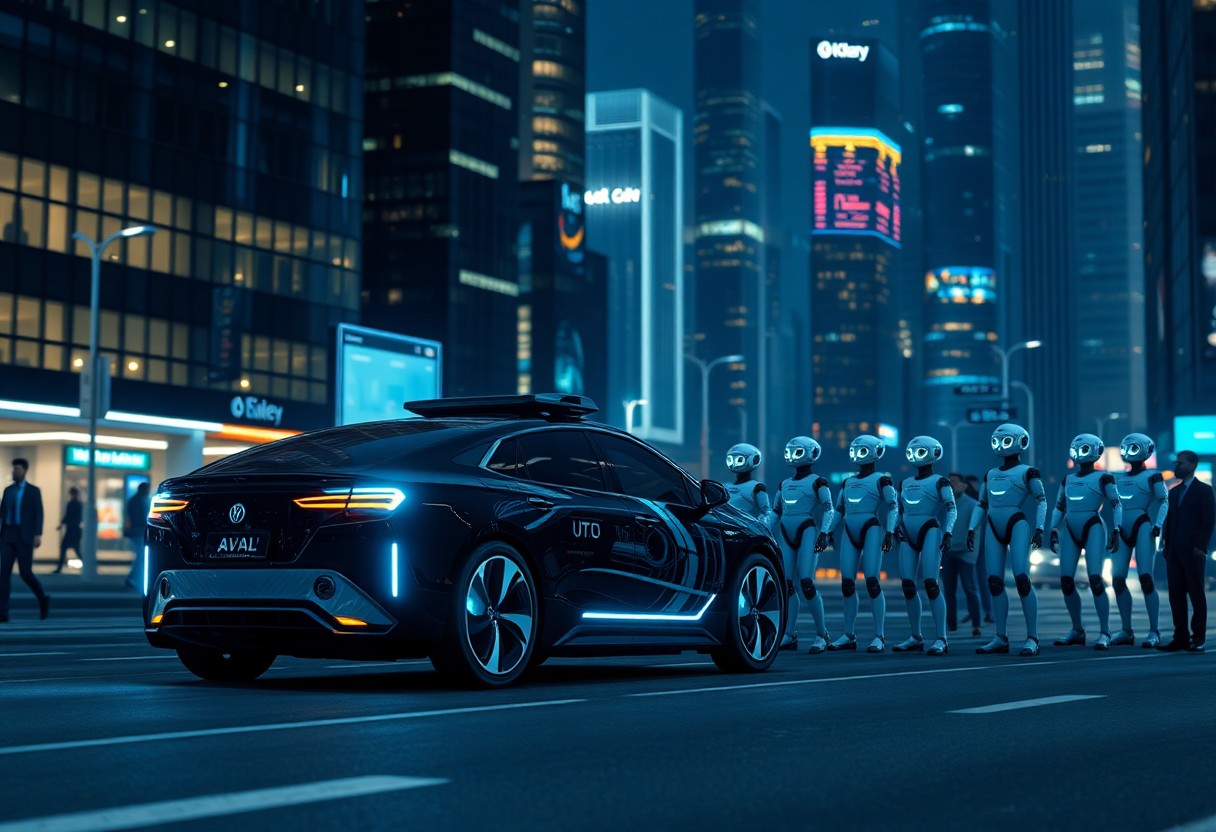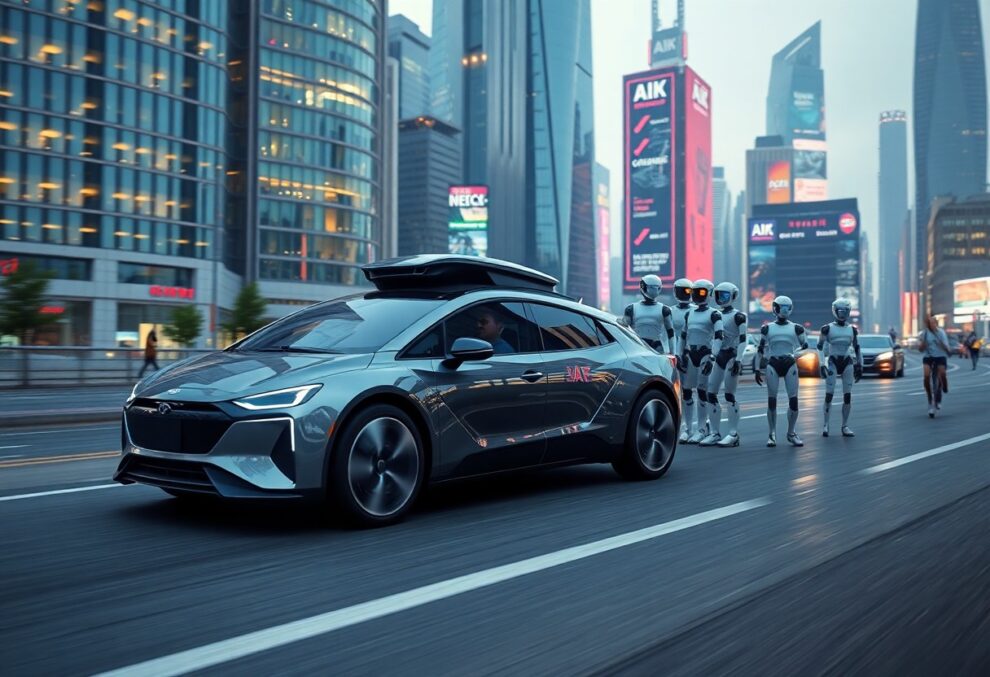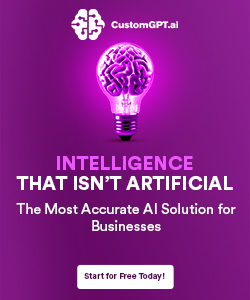Over the past decade, artificial intelligence has revolutionized various aspects of our daily lives, transforming industries and creating innovative solutions. In this post, you will explore a spectrum of AI technologies, from chatbots that enhance customer experience to self-driving cars that redefine transportation. You’ll gain insight into how these advancements work, their underlying principles, and the potential they hold for your future. By understanding these technologies, you can better navigate the rapidly evolving landscape of AI and make informed decisions about its implications on your life and work.
Understanding Artificial Intelligence
For anyone interested in technology, understanding artificial intelligence (AI) is crucial as it continues to shape your world. AI encompasses a broad range of technologies designed to mimic or replicate human cognitive functions such as learning, reasoning, and problem-solving. From chatbots to automation in industries, AI plays a significant role in various applications that affect your daily life and future innovations.
Definition and Scope
Artificial intelligence refers to the simulation of human intelligence in machines programmed to think and learn like humans. The scope of AI extends across multiple domains, including natural language processing, robotics, machine learning, and computer vision, showcasing its versatility and impact on various sectors.
Historical Development
Any conversation about AI would benefit from a glimpse into its historical development, which spans decades. Early attempts to create intelligent machines can be traced back to the mid-20th century, marked by pioneers such as Alan Turing and John McCarthy, who coined the term “artificial intelligence” in 1956. Since then, advancements in algorithms, computing power, and data availability have propelled AI from theoretical concepts to practical applications that you now encounter in everyday life.
Further exploration into AI’s historical development reveals pivotal milestones, including the introduction of neural networks in the 1980s and the resurgence of machine learning techniques in the 2000s. Breakthroughs in deep learning in the 2010s revolutionized the field, allowing computers to recognize patterns and make predictions with remarkable accuracy. As you navigate through the current AI landscape, appreciating this historical context enhances your understanding of the technologies that continue to evolve and influence your experiences.

Chatbots: The Frontline of AI
Assuming you’ve interacted with a chatbot, you understand their growing role in our digital landscape. These AI-driven tools serve as the initial point of contact for many businesses, handling inquiries and providing information in real-time. By leveraging natural language processing, they can carry on engaging conversations and assist users at any time, making them an integral part of modern customer interactions.
Evolution and Capabilities
With significant advancements in machine learning and natural language processing, chatbots have evolved from simple question-answer systems to sophisticated conversational agents. They can now understand context, recognize intent, and provide personalized experiences. As a result, their capabilities expand, allowing them to handle complex inquiries and improve user satisfaction.
Applications in Business and Customer Service
On the business front, chatbots streamline customer service by providing instant support and addressing customer queries efficiently. This automation reduces wait times and elevates the customer experience, enabling your team to focus on more complex tasks.
In fact, many companies now rely heavily on chatbots to enhance customer service operations. By integrating these AI systems into your workflow, you can ensure 24/7 assistance, gather valuable insights from interactions, and maintain consistent communication channels. This not only improves your response times but also increases customer engagement and loyalty, making it a smart investment for modern businesses.
Machine Learning: The Engine Behind AI
If you want to understand how AI systems learn and make decisions, you’ll find that machine learning serves as their core engine. It allows algorithms to analyze data, recognize patterns, and improve over time without being directly programmed. This technology is fascinating as it drives innovations across various sectors, enhancing the capabilities of chatbots, recommendation systems, and more.
Types of Machine Learning
Types of machine learning can be categorized into three main approaches:
- Supervised Learning
- Unsupervised Learning
- Reinforcement Learning
The approach you choose depends on your specific application and the kind of data you have.
| Supervised Learning | Learning with labeled data. |
| Unsupervised Learning | Finding hidden patterns in unlabeled data. |
| Reinforcement Learning | Learning through trial and error, maximizing rewards. |
| Semi-supervised Learning | Combining labeled and unlabeled data for training. |
| Deep Learning | Using neural networks for complex tasks. |
Real-World Applications and Impacts
Before diving deeper into the implications, it’s vital to understand how machine learning influences your daily life. From personalized recommendations on streaming services to advancements in healthcare diagnostics, machine learning algorithms continue to transform industries by providing data-driven insights and enhancing decision-making processes.
Another noteworthy impact of machine learning is its ability to improve customer experiences. AI systems optimize interactions by analyzing user data and preferences, leading to more tailored services. The financial sector benefits as well, using machine learning to detect fraudulent activities and manage risks effectively. The versatility of machine learning underscores its potential to create substantial change in modern society, fostering innovation across various fields.
Computer Vision: Enabling Machines to See
To truly understand the world around us, machines need the ability to perceive visual information similarly to how humans do. This is where computer vision steps in, enabling machines to interpret and process visual data through advanced algorithms and deep learning techniques. By mimicking human visual perception, computer vision offers innovative solutions across various sectors, from healthcare to automotive industries, allowing you to gain insights and enhance efficiency like never before.
How Computer Vision Works
Works by utilizing algorithms that analyze and interpret visual data from the environment. These systems rely on complex neural networks to detect patterns, recognize objects, and derive meaningful information from images or videos. By training on large datasets, computer vision models improve their accuracy over time, enabling you to leverage their capabilities for a diverse range of applications.
Applications in Industry and Beyond
Works to transform multiple industries, including manufacturing, healthcare, automotive, and retail. In manufacturing, computer vision helps in quality control and automation processes. In healthcare, it aids in medical imaging analysis for accurate diagnosis. The automotive sector utilizes it for developments in self-driving technology, while retail enhances customer experiences through visual recognition. Your industry can benefit from these advancements, streamlining operations and providing greater accuracy in data interpretation.
Plus, the applications of computer vision extend beyond traditional industries to areas like agriculture, where it monitors crop health, and security, where it enhances surveillance systems. This technology supports real-time analysis and decision-making processes, ensuring that you can act swiftly and effectively. As you explore these applications, you’ll find that computer vision not only improves operational efficiencies but also fosters innovation, which can lead to new business models and better customer engagement.
Robotics and Automation in AI
All around us, robotics and automation are revolutionizing industries with their ability to perform tasks that once required human intervention. As AI continues to progress, these technologies are becoming more sophisticated, enabling machines to learn from their environments and adapt to various challenges. You will discover how innovations in this field are boosting efficiency and transforming everyday tasks across numerous sectors.
Advances in Robotics Technology
Along the journey of innovation, advances in robotics technology have led to the creation of highly adaptable machines capable of performing complex tasks. With developments in machine learning, computer vision, and tactile sensors, robots can analyze their surroundings and respond intelligently. This means that industries like manufacturing, healthcare, and logistics are now benefiting from increased precision and operational efficiency that was previously unattainable.
Impact on Labor Markets and Society
About the potential impact of robotics on labor markets and society, you may wonder how these advancements will reshape jobs and employment opportunities. As machines take over repetitive and hazardous tasks, they can enhance productivity, but this also raises questions about employment security for the workforce. Organizations will need to adapt, and workers may have to reskill to remain relevant in an evolving job landscape.
And as automation continues to permeate various industries, the effects on labor markets extend beyond job displacement. Greater efficiency can lead to economic growth, but it may also contribute to income inequality if high-skill jobs are favored over low-skill positions. As you navigate this rapidly changing environment, staying informed about such dynamics will help you understand the broader implications for society and future career paths.
Self-Driving Cars: The Future of Autonomous Transportation
Once again, we find ourselves on the brink of a technological revolution, with self-driving cars poised to transform how you navigate the world. These autonomous vehicles promise to enhance road safety, reduce traffic congestion, and free up your time for other activities as you travel. As the technology continues to evolve, the prospect of a society where human drivers become the exception rather than the norm is closer than ever.
How They Work: Technology Behind Self-Driving Cars
Among the key components that enable self-driving cars to operate are sophisticated sensors, cameras, and artificial intelligence algorithms. These elements work in concert to interpret the vehicle’s surroundings, make split-second decisions, and navigate complex environments. You will find that these cars utilize a blend of machine learning and real-time data analysis to enhance their driving capabilities continuously.
Challenges and Ethical Considerations
Any innovation brings its set of challenges, and self-driving cars are no exception. As you explore this frontier, you’ll encounter issues related to safety, regulatory frameworks, and ethical dilemmas surrounding decision-making during critical situations.
Indeed, the ethical considerations surrounding self-driving cars are complex and multifaceted. You may ponder questions such as how an AI should prioritize the safety of passengers versus pedestrians in unavoidable accident scenarios. Further, the potential for job displacement in the trucking and transportation sectors raises concerns about economic impacts. Navigating these challenges requires a thoughtful approach that balances technological advancement with societal values, necessitating a dialogue among policymakers, technologists, and you—the everyday user—about what a future with autonomous vehicles should look like.
Final Words
Presently, as you explore the vast landscape of AI technologies, from chatbots to self-driving cars, it’s evident that these innovations are reshaping your daily life and environment. Understanding the intricacies of AI empowers you to better navigate these advancements, enhancing your interactions and experiences. Embrace the knowledge of these technologies, as they not only hold the key to convenience and efficiency but also pave the way for a future where AI becomes an indispensable part of your routine.
Q: What are the key technologies behind chatbots and self-driving cars?
A: The development of chatbots and self-driving cars involves various AI technologies. For chatbots, natural language processing (NLP) is fundamental. It allows the chatbot to understand and respond to user inputs in a conversational manner. Machine learning algorithms are also used to enhance their performance through training on large datasets. On the other hand, self-driving cars rely heavily on computer vision, which processes visual information from cameras to identify objects, lanes, and pedestrians. Additionally, sensor fusion, which integrates data from various sensors like LIDAR, radar, and ultrasonic sensors, plays a critical role in making real-time driving decisions. Lastly, reinforcement learning helps these vehicles improve their driving strategies over time by providing rewards for successful navigation and penalties for mistakes.
Q: What are some ethical considerations associated with AI technologies in chatbots and self-driving cars?
A: Ethical considerations in AI technologies are significant in both chatbots and self-driving cars. For chatbots, issues related to privacy and data security arise as they often process personal information. This raises concerns about how user data is stored, shared, and protected. Additionally, the potential for bias in NLP algorithms can lead to unequal service delivery, impacting user experience based on demographic factors. In self-driving cars, ethical dilemmas often revolve around decision-making in critical situations, such as how an autonomous vehicle should respond to unavoidable accidents. The programming of these systems must consider moral implications, ensuring that they prioritize human safety and adhere to legal standards. Moreover, there are broader societal implications regarding employment, as these technologies could disrupt jobs in driving sectors.
Q: How do the advancements in AI impact the future of industries such as transport and customer service?
A: Advancements in AI technologies are set to transform various industries profoundly. In transport, self-driving cars could enhance efficiency by reducing traffic congestion and accidents through optimized driving algorithms. This might also lead to lower insurance costs and an expansion of mobility for individuals unable to drive. Furthermore, as autonomous technology matures, it could reshape urban planning and infrastructure, leading to smarter cities. In customer service, chatbots are already streamlining interactions, providing 24/7 support, and handling routine inquiries faster than human operatives. This allows human agents to focus on more complex tasks, improving overall service quality. As these technologies continue to evolve, they may introduce new business models and change consumer expectations regarding service delivery.










